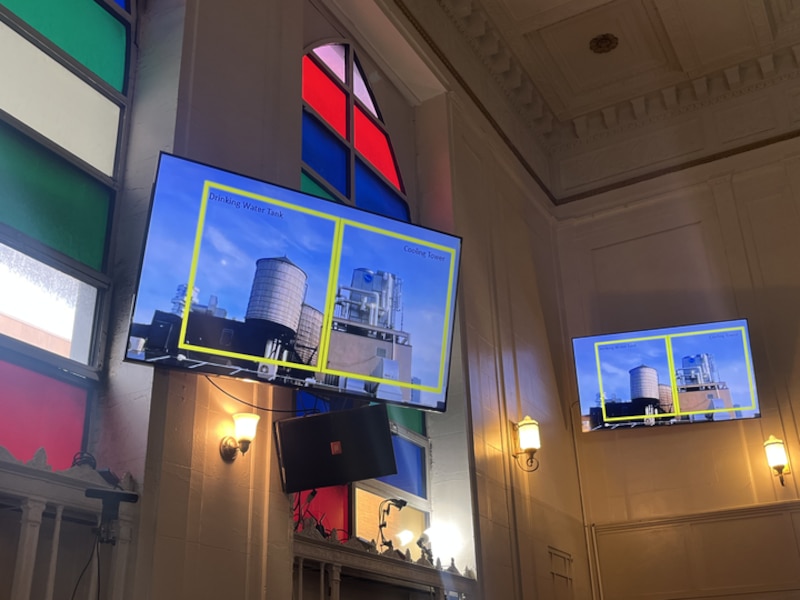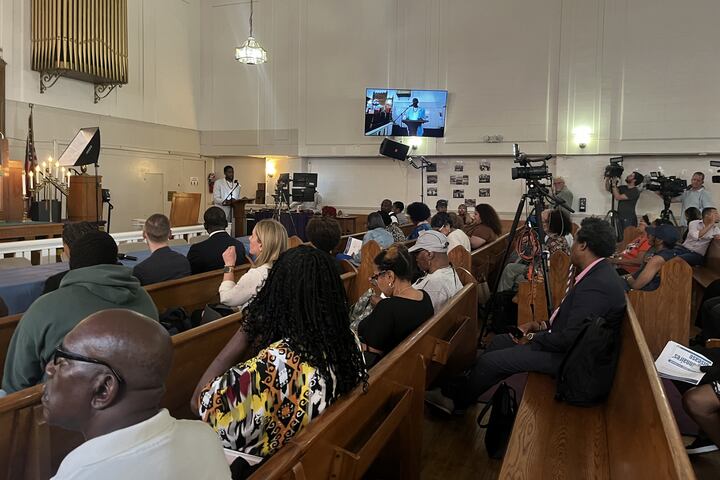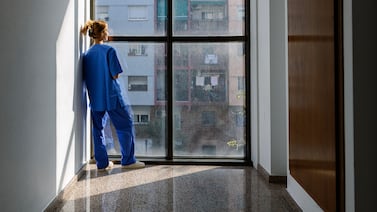Public health, explained: Sign up to receive Healthbeat’s free New York City newsletter here.
Harlem residents arrived at Mount Zion A.M.E. Church on Thursday evening armed with questions about Legionnaires’ disease. They wanted to understand how it spreads and how to protect themselves. But most of all, they wanted to know: Why does this keep happening in our neighborhood?
A fourth death had just been announced in the ongoing outbreak in Central Harlem, which has resulted in nearly 100 cases since late July. Seventeen people are currently hospitalized.
It’s not the first time Legionnaires’ disease has emerged in Upper Manhattan. In 2022, five people died of the disease at a nursing home in Morningside Heights. In 2018, three residents of the St. Nicholas Houses, a Harlem public housing development, contracted the disease. And across the water in the South Bronx, 16 people died in a 2015 outbreak.
“We’re really concerned about why this seems to be the epicenter of this problem,” U.S. Rep. Adriano Espaillat, a Democrat who represents Upper Manhattan and parts of the Bronx, told the crowd of about 50 at the town hall and information session, which was organized by Public Advocate Jumaane Williams.
Harlem is particularly vulnerable to Legionnaires’ disease outbreaks, said Dr. Michelle Morse, acting commissioner of the New York City Department of Health and Mental Hygiene. She noted factors including the neighborhood’s high density of tall buildings with cooling towers, and the concentration of chronic disease — a risk factor for Legionnaires’ — in Upper Manhattan and the Bronx. She also pointed to historic disinvestment and structural racism as contributors.
Legionnaires’ disease tends to emerge more frequently in neighborhoods with older populations and higher rates of poverty, according to a Health Department surveillance report. From 2019 to 2022, the city’s highest annual Legionnaires’ disease rates were concentrated in parts of Harlem and the Bronx. Among residents with Legionnaires’ disease in that period, more than 90% had at least one chronic medical condition, and more than 50% were previous or current smokers.

The Health Department has focused its current investigation on cooling towers, which sit on building rooftops, regulating temperature systems. On Thursday, the agency released a list of 10 buildings in Central Harlem with cooling towers that had tested positive for Legionella bacteria, which can cause the disease. The agency is still working to identify the source of the outbreak.
Cooling towers are distinct from water tanks, which provide drinking water to buildings, meaning that the water in Harlem remains safe for drinking and bathing.
New York City Councilmember Yusef Salaam, a Democrat who represents Harlem and parts of Upper Manhattan, read aloud the list of buildings that had tested positive for Legionella. Some members of the audience shook their heads as he announced each location. Salaam said that he was especially concerned to see Harlem Hospital on the list.
Health Department officials believe the outbreak is starting to be contained, as the rate of new diagnoses slows. But officials still urge anyone in Central Harlem who starts to experience flu-like symptoms to seek medical care urgently.
“This is all about getting diagnosed early, as soon as you have symptoms,” Morse told the crowd.
Symptoms of Legionnaires’ disease typically include a cough, fever, muscle aches, and chills, and can include headaches, fatigue, loss of appetite, confusion, or diarrhea.
On Thursday, some local officials contended that the city had not done enough to keep residents safe.
“The Health Department’s delayed action and the lack of urgency when the first cases emerge, and the absence of a robust, preventive plan all contributed to this crisis,” Salaam said.
When the cluster of cases emerged, the Health Department responded rapidly, Morse said, with inspectors sampling cooling towers in the area of investigation within 72 hours. The agency initially released a list of affected ZIP codes, but not building locations, which Morse has said was done to encourage everyone in the large investigation zone to remain alert for Legionnaires’ symptoms.
Williams, the public advocate, raised concerns about the Health Department’s staffing levels for cooling tower inspections. Gothamist recently reported that inspections for Legionella bacteria in the city’s cooling towers hit a record post-pandemic low in the months leading up to the outbreak. A Health Department spokesperson told Gothamist that the inspection decline was due to a lack of inspectors.
There are “a lot of open positions across the city,” Williams said, which have had “deadly consequences.”
Morse acknowledged a decrease in inspectors, but said that there had been enough inspectors to rapidly respond to the initial outbreak.
“Inspections are important, and they help to reduce the risk and chances of a Legionella cluster, but they don’t eliminate it,” she said. “It’s just like getting a colonoscopy…that colonoscopy doesn’t mean you’re never going to get colon cancer. It means that you’re going to know sooner and get treatment sooner.”
Williams also questioned whether the buildings with cooling towers that tested positive for Legionella had been in compliance with city regulations.
Corinne Schiff, the Health Department’s deputy commissioner for environmental health, said that the agency was still assessing compliance and would issue fines if necessary.
Questions about the transmission of Legionnaire’s disease had drawn Cenda Jenkins, 80, to Thursday’s event. A Harlem resident, she said she had learned about the outbreak on the news.
Though her questions had been answered, she said she remained concerned, as her chronic diseases put her at heightened risk for Legionnaires’ disease.
“You worry about, ‘Did they only test that area? What about the other areas?’” she said.
Eliza Fawcett is a reporter covering public health in New York City for Healthbeat. Contact Eliza at efawcett@healthbeat.org .







